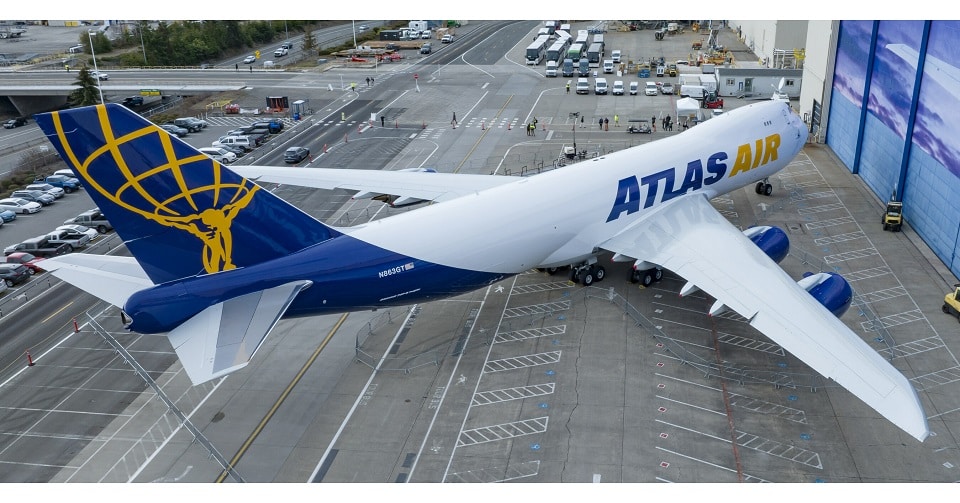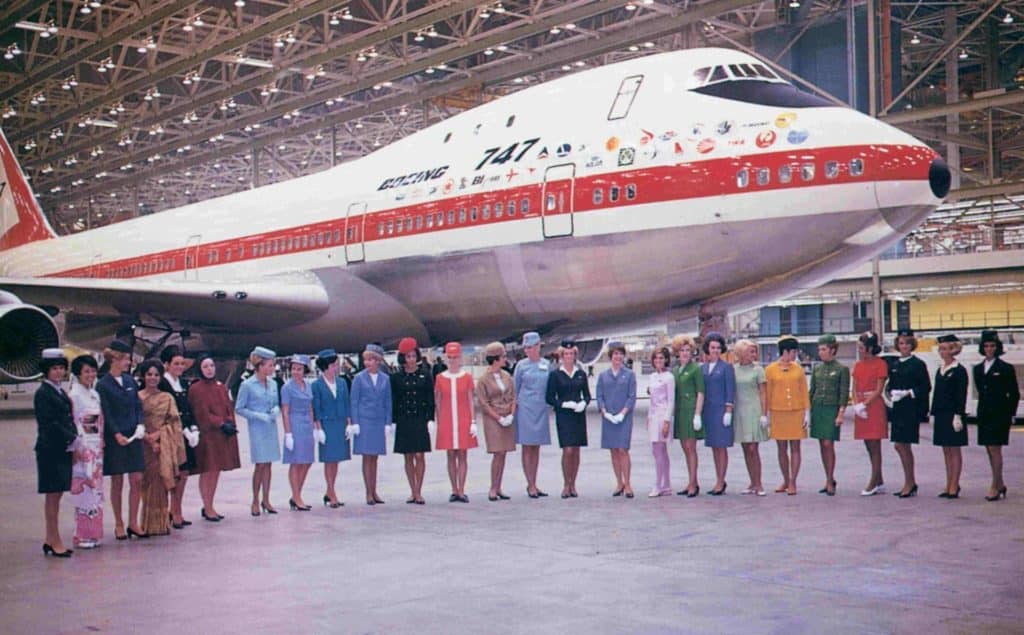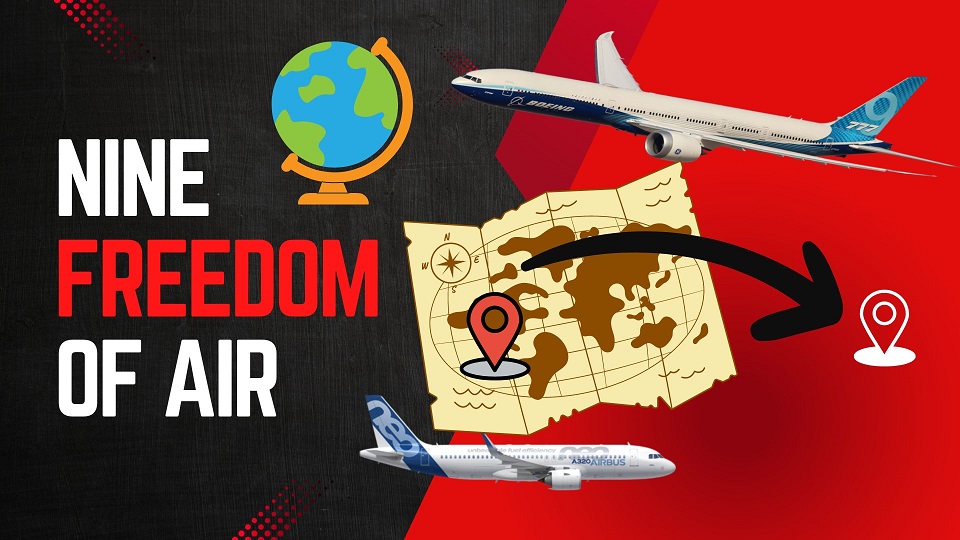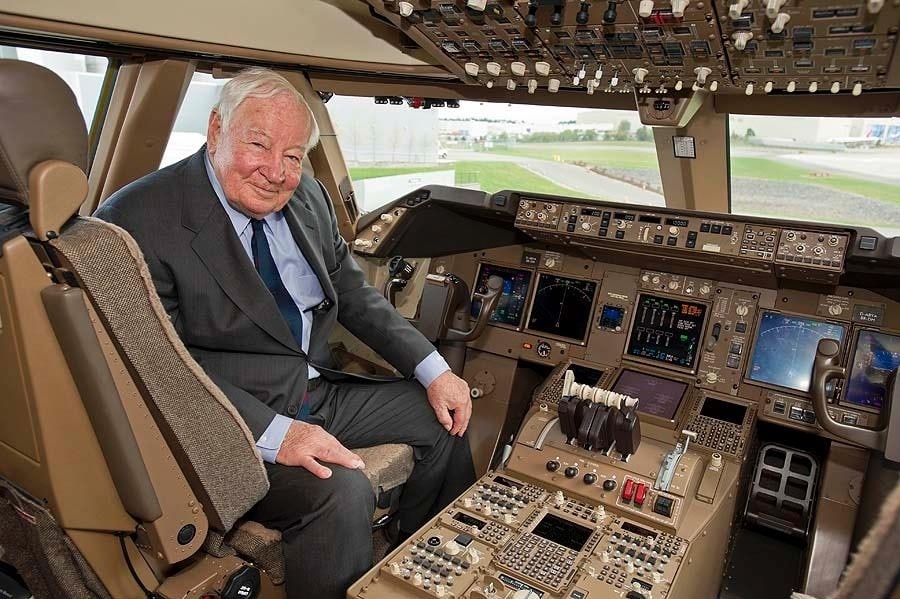Airlines
Boeing, Atlas Air Celebrate Delivery of Final 747, an Airplane that Transformed Aviation and Global Air Travel

EVERETT, Wash., Jan. 31, 2023 /PRNewswire/ — Boeing [NYSE: BA] and Atlas Air Worldwide [Nasdaq: AAWW] joined thousands of people – including current and former employees as well as customers and suppliers – to celebrate the delivery of the final 747 to Atlas, bringing to a close more than a half-century of production.
Boeing employees who designed and built the first 747, known as the “Incredibles,” returned to be honored at the Everett factory where the journey of the 747 began in 1967. The factory produced 1,574 airplanes over the life of the program.
“This monumental day is a testament to the generations of Boeing employees who brought to life the airplane that ‘shrank the world,’ and revolutionized travel and air cargo as the first widebody,” said Stan Deal, president, and chief executive officer of Boeing Commercial Airplanes. “It is fitting to deliver this final 747-8 Freighter to the largest operator of the 747, Atlas Air, where the ‘Queen’ will continue to inspire and empower innovation in air cargo.”
- Largest commercial aircraft: The 747 was the largest commercial aircraft when it was first introduced in 1970, and its size has been surpassed only by the Airbus A380.
- Longest production run: The 747 had the longest production run of any commercial airliner, with continuous production from 1968 to 2021.
- Most units produced: The 747 is the most-produced wide-body airliner in history, with over 1,500 units produced.
- Fastest transatlantic crossing: The 747 set a record for the fastest transatlantic crossing by a commercial airliner, completing the journey in just under 4 hours.
- Most passengers carried: The 747 has carried more passengers than any other commercial airliner, with over 5 billion people flown on the aircraft.
- Most cargoes carried: The 747 is also the most widely used cargo aircraft in the world, having carried more cargo than any other aircraft.
- Longest-range commercial airliner: The 747-8, the latest version of the 747, is capable of flying non-stop for over 8,000 nautical miles, making it the longest-range commercial airliner in the world.
- Most fuel-efficient wide-body airliner: The 747-8 is also one of the most fuel-efficient wide-body airliners, with fuel consumption that is significantly lower than its predecessors.

The-first-manufactured-747-at-Boeing’s-Everett-factory-in-1968-with-cabin-crew-representing-all-the-airlines-with-orders-for-the-aircraft
“We are honored to continue our long history of flying this iconic aircraft for our customers around the world,” said John Dietrich, president, and chief executive officer, Atlas Air Worldwide. “Atlas Air was founded over 30 years ago with a single 747-200 converted freighter, and since then, we have spanned the globe operating nearly every fleet type of the 747, including the Dreamlifter, Boeing’s 747 Large Cargo Freighter, for the transport of 787 Dreamliner parts. We are grateful to Boeing for their shared commitment to safety, quality, innovation, and the environment, and for their partnership to ensure the continued success of the 747 programs as we operate the aircraft for decades to come.”
As the first twin-aisle airplane and “jumbo jet,” the “Queen of the Skies” enabled airlines to connect people across vast distances and provide non-stop trans-oceanic flights. Its development solidified Boeing’s role as an industry leader in commercial aviation. The airplane’s core design with its distinctive hump and seating in the upper deck has delighted generations of passengers and operators alike. Boeing continued to improve on the original design with models like the 747-400 in 1988 and the final 747-8 model that was launched in 2005; across all the models, the jet has delivered unmatched operating economics and efficiency to travel and air cargo markets.

Airlines
The Nine Freedoms of the Air – Jetline Marvel

Most of us travel from one city to another city via road we need to get permission to that specific city if it is in another country like a visa or Road access permission to use its property for revenue purposes to carry passengers and Cargo. Similarly, In the airline Industry, it is also important that the Company have permission to fly and access that country whether it’s for stoppage flying above them, or Operating the passengers within that country This is called Freedom of the Air.
Some countries together they agree with certain conditions to access their Aerospace for to access for the airline to travel above their nation. If the bilateral is done for Their own countries’ airlines or other countries’ airlines. In this chapter, we understand how this thing is carried out. What all the condition has to look into that.
The Freedoms of the Air are international commercial aviation agreements (traffic rights) that grant a country’s airline(s) the privilege to enter and land in another country’s airspace. They were formulated in 1944 at an international gathering held in Chicago (known as the Chicago Convention) to establish uniformity in world air commerce. There are generally considered to be nine freedoms of the air.
Most nations of the world exchange first and second freedoms through the International Air Services Transit Agreement. The other freedoms,chase freedom airline miles when available, are usually established between countries in bilateral or multilateral air services agreements. The third and fourth freedoms are always granted together. The eighth and ninth freedoms (cabotage) have been exchanged only in limited instances
First Freedom:
The basic permission granted to an airline from one country (A) to fly through the airspace of another country (B)
Second Freedom:
The permission for a commercial airplane from country (A) to land and refuel (often called a technical stop) in another country (B).
Third Freedom :
The privilege for an airline to transport paying (Revenue) passengers from its home country (A) to another country (B).
Fourth Freedom
The rights for an airline to transport paying (Revenue )passengers from another country (B) to the airline’s home country (A).
Fifth Freedom
Fifth Freedom (also known as beyond rights): The rights for an airline to transport passengers from its home country (A) to a destination (B), then pick up and carry passengers to other international destinations (C).
Sixth Freedom:
Sixth Freedom (Combination of Third & Fourth Freedoms) The right for an airline to carry passengers or cargo between two foreign countries (B and C), provided the aircraft touches down in the airline’s home country (A).
Seventh Freedom:
The authorization for an airline to operate flights that start in a foreign country (B), skip its home country (A), and transport passengers to another international destination (C).
Eighth Freedom Air
The rights for an airline to transport passengers from one location within a country’s territory (B) to another point within the same country on a flight originating in the airline’s home country (A). This right is commonly referred to as cabotage and is notably scarce outside of Europe.
Ninth Freedom Air
The entitlement for an airline from a specific country (A) to begin a flight in a foreign country (B) and transport passengers from one location to another within that foreign country. This concept, also referred to as stand-alone cabotage, distinguishes itself from the traditional aviation definition of cabotage by not directly involving the airline’s home country.
Airlines
ANA and Air India Launch Codeshare Agreement for Enhanced Travel Options

The national flag carrier of India, Air India, and All Nippon Airways (ANA) have signed a business deal to initiate a codeshare alliance that will link India and Japan.
Starting on May 23, customers will have more flight options with this cooperation between the two Star Alliance members. By consolidating flights from both airlines onto a single ticket, passengers will be able to go to their selected destinations more quickly. Additionally, both passengers on codeshare flights can take advantage of the premium services that Star Alliance provides to its premium members, like priority boarding and lounge access.
ANA will use its “NH” code on Air India flights between Narita and Delhi, and Air India will add its “AI” code to ANA’s flights between Haneda and New Delhi and Narita and Mumbai. These codes will go on sale on April 23.
Soon, the two airlines hope to add more destinations as part of their growing partnership. Through expanded chances for visitors from both nations to explore each other’s wonders, this agreement will help to strengthen the economic and commercial links between Japan and India. The airlines’ individual websites, reservation systems, and travel companies will all offer codeshare flights for sale.
Chief Commercial & Transformation Officer of Air India Nipun Aggarwal stated, “This codeshare agreement with All Nippon Airways marks an important step forward in connecting India and Japan.” “This partnership increases our network’s reach and provides our customers with more options for flights between the two nations as well as seamless travel experiences. We anticipate working well with ANA and looking at potential future collaboration opportunities.”
Airlines
An A320 plane flew for 28 minutes with both pilots asleep

In a startling incident, an Airbus A320 operated by an Indonesian airline, Batik Air, flew for a harrowing 28 minutes with both pilots asleep at the controls.
The alarming event unfolded on Batik Air Flight 6723, carrying 153 passengers, en route to Soekarno–Hatta International Airport in Jakarta. The saga began when the first officer allowed the captain to take a nap, only to fatigue himself, attributing his drowsiness to caring for his one-month-old twins. As the pilots dozed off, the aircraft veered off-course, prompting concerns from air traffic control (ATC) who lost contact with the flight 90 minutes into its journey.
Despite the pilots being unresponsive for nearly half an hour, ATC managed to track the aircraft using radar as it covered a staggering 210 nautical miles, equivalent to the distance between New York and Washington, D.C. The captain eventually woke up, realizing the perilous situation and rousing his co-pilot.
After correcting the flight path, the captain attributed the radio silence to a “communication problem,” and the plane eventually touched down safely in Jakarta. However, the incident sparked widespread concern and investigation by Indonesia’s transport ministry.
A preliminary report revealed that the second-in-command had not rested adequately before the flight, shedding light on the potential dangers of pilot fatigue. While the identities of the pilots remained undisclosed, the incident underscored the critical importance of ensuring crew members are well-rested and fit for duty.
Despite the gravity of the situation, the swift actions of the awakened captain averted disaster, emphasizing the necessity for robust safety protocols and measures within the aviation industry.




































